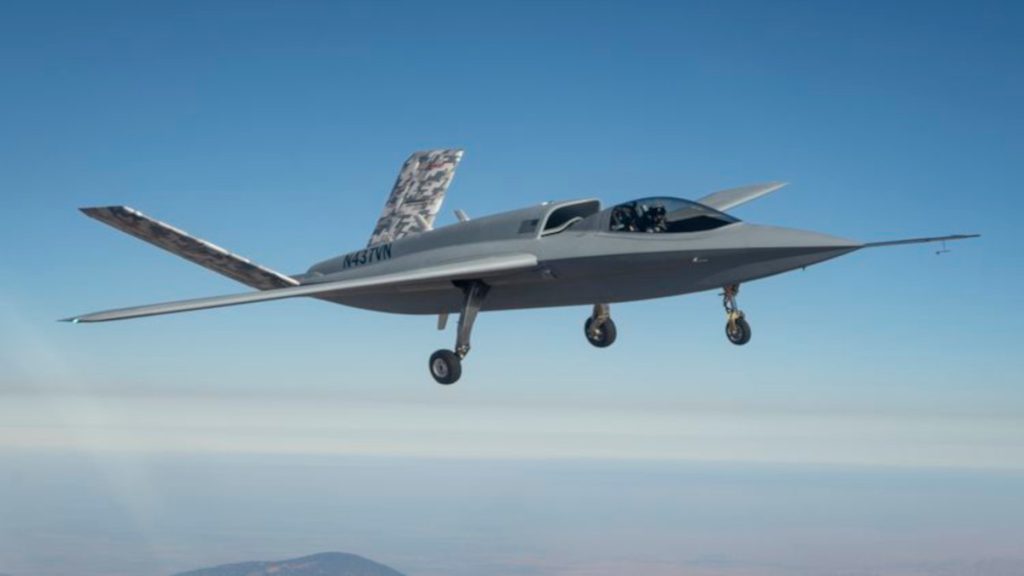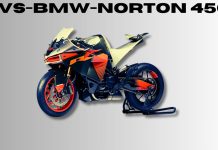Northrop Grumman’s Model 437 “Vanguard” marks a significant step in autonomous aviation with its focus on collaborative systems. This aircraft, designed for evolving autonomous needs, showcases rapid advancement in aviation technologies.
What sets the Model 437 apart from other uncrewed vehicles is its ability to include a pilot, facilitating broader flight demonstrations and testing without needing special permits from the Federal Aviation Administration (FAA).
This hybrid approach speeds up development, making it easier to integrate advanced technologies into real-world operations.
The Evolution of Northrop Grumman’s Autonomous Aircraft
The journey to the Model 437 happened through years of refining autonomous aviation. Derived from the Model 401, an uncrewed aircraft used as a testbed for Northrop’s collaborative autonomous systems, the Model 437 adds a piloted capability.
The first flight, on August 29, 2024, flown by Northrop Grumman test pilot Brian Maisler at Mojave Air & Space Port in California, was a milestone. Including a pilot wasn’t just symbolic—it made the aircraft more flexible.
A piloted aircraft can fly in areas restricted to fully autonomous vehicles. This includes populated regions and flight paths requiring FAA permits for uncrewed aircraft. A pilot onboard eliminates restrictions, allowing testing in diverse environments and more frequently.
Autonomous Collaboration: The Future of Air Combat
Northrop Grumman’s Model 437 is part of a broader initiative focused on collaborative autonomous systems. The idea: autonomous aircraft working alongside manned jets to provide firepower, surveillance, or critical mission support without risking human lives.
This concept, often called the “loyal wingman” approach, involves drones like the Model 437 acting as support units for manned fighter jets in combat.
Why is this crucial? In modern warfare, decision-making speed is key. Autonomous systems like the Model 437 process information faster than human pilots, allowing quicker responses to threats.
They can also be deployed in high-risk areas where sending a human pilot would be too dangerous. A drone like the Model 437 could scout enemy positions, engage targets, or act as a decoy, drawing fire away from manned aircraft.

Modular Design for Maximum Flexibility
A standout feature of the Model 437 is its modular design. The aircraft’s wings are removable, so it can be disassembled, stored, and transported more easily than traditional aircraft. This aligns with the U.S. Air Force’s vision of a collaborative combat aircraft fleet.
These drones could be pre-positioned globally, stored in crates, and assembled when needed. This reduces the logistical burden of maintaining a large fleet always ready.
According to Colin Miller, Northrop Grumman’s senior vice president for engineering, having a pilot onboard provides several advantages. It allows the aircraft to fly in national airspace without special permits and provides safety.
If the aircraft behaves in an unexpected or dangerous way while in autonomous mode, the pilot can take control and steer it to safety. This hybrid approach ensures thorough testing without the risks associated with fully autonomous operations.
Airspace Challenges and FAA Regulations
One of the biggest hurdles facing autonomous aircraft development involves the slow pace at which the FAA opens up more airspace for large uncrewed vehicles. The FAA’s cautious approach focuses on safety but has constrained the pace of new drone technology development.
Including a pilot bypasses some of these restrictions. With a human in the cockpit, the aircraft classifies as a piloted vehicle rather than an autonomous drone, allowing flight in national airspace without needing special FAA permits.
This opens up opportunities for testing and speeds up development. It also allows the aircraft to be tested in more realistic environments, such as urban areas or near military installations, where fully autonomous drones are prohibited.
Tactical Applications and Future Iterations
The Model 437 acts as a platform for exploring a range of tactical applications. Northrop Grumman indicated future versions of the aircraft could be fully autonomous, removing the need for a pilot entirely. This would align with the Air Force’s vision of a fleet of autonomous collaborative aircraft operating independently or alongside manned jets in combat.
One key tactical application for the Model 437 involves air-to-air combat. Northrop Grumman revealed the aircraft could carry up to two AIM-120 Advanced Medium Range Air-to-Air Missiles (AMRAAMs), making it a formidable weapon in aerial combat.
The ability to engage enemy aircraft without risking a human pilot offers a significant advantage in modern warfare. Air Force leaders emphasized early iterations of the Collaborative Combat Aircraft (CCA) program focus heavily on air-to-air applications.
Northrop Grumman hinted the Model 437 could be used for various missions, including surveillance, reconnaissance, and electronic warfare. The aircraft’s modular design means it can be equipped with different payloads depending on mission requirements.
This flexibility makes it an attractive option for both the U.S. Air Force and other potential customers, including the U.K. and the U.S. Navy.
Potential Customers and International Interest
While the U.S. Air Force remains the primary customer for the Model 437, Northrop Grumman indicated interest from other countries. The U.K., for example, requires a CCA-like capability to escort its F-35 fighter jets. The Model 437, with the ability to carry air-to-air missiles and operate with manned aircraft, would be a natural fit.
Similarly, the U.S. Navy is pursuing its own CCA program. Northrop Grumman’s experience with autonomous systems makes it a strong contender.
The company demonstrated its X-47 aircraft’s capabilities, which successfully took off and landed on aircraft carriers without human intervention. This expertise applies to the Model 437, making it valuable for naval operations.
The Road Ahead for Autonomous Collaborative Aircraft
The Model 437 marks a significant step forward in developing autonomous collaborative aircraft, but it represents the beginning. Northrop Grumman’s approach, combining piloted and autonomous capabilities, accelerates the testing and development of new technologies.
As the FAA opens up more airspace for uncrewed vehicles, innovation in this field will likely increase.
In the future, fully autonomous versions of the Model 437 are expected, along with new iterations designed for specific missions. The aircraft’s modular design and flexibility make it a versatile platform can adapt to meet the needs of a wide range of customers, from the U.S. Air Force to international partners.
Conclusion
Northrop Grumman’s Model 437 “Vanguard” represents a glimpse into the future of air combat. Combining autonomous capabilities with the safety and flexibility of a piloted aircraft.
The Model 437 allows quicker, diverse testing. As autonomous systems development accelerates, the Model 437 will play a key role in the next generation of air combat, providing a valuable asset for both the U.S. military and its international allies.
This aircraft, with its modular design and air-to-air combat capabilities, stands as a milestone in the journey toward fully autonomous collaborative combat aircraft. The future of air combat is autonomous, and the Model 437 leads the way.


































